Stacked Cabin by Johnsen Schmaling Architects
Milwaukee office Johnsen Schmaling Architects chose a palette of bare concrete, cedar and anodised metal to construct this small family retreat in a remote Wisconsin forest (+ slideshow).

Called Stacked Cabin, the house nestles against the sloping landscape of a small woodland clearing, allowing entrances on two of its three compact floors.
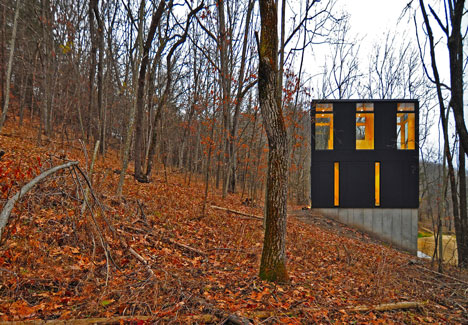
Thick concrete walls surround rooms at the base of the house, while upper floors are clad with the lightweight metal panels and cedar is used for the doors and window frames.
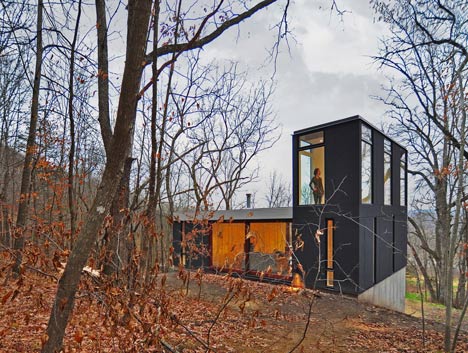
"The meticulously detailed project takes advantage of readily available materials used in the region's farmstead architecture," explains Johnsen Schmaling Architects. "Exposed concrete, cedar, anodised metal and cementitious plaster all echo the muted, earthy hues of the surrounding forest and rock formations."
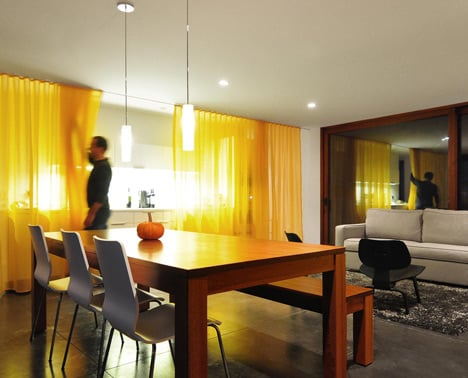
A workshop occupies most of the ground floor level, alongside a small washroom and equipment area. A large cedar door opens this floor out to the forest, while a smaller door leads up to the domestic spaces on the floors above.

On the first floor, a living room is sandwiched between a kitchen and a pair of bedrooms. There are no walls between the rooms, but a set of curtains allows residents to partition the spaces when necessary.
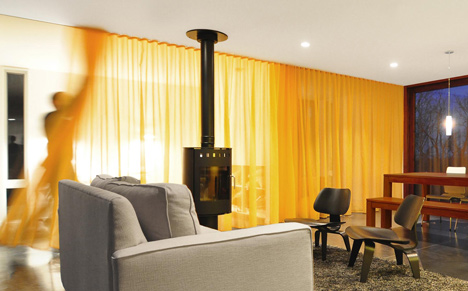
The front and rear walls of the living room are glazed and slide open for cross ventilation during the warmer summer months.
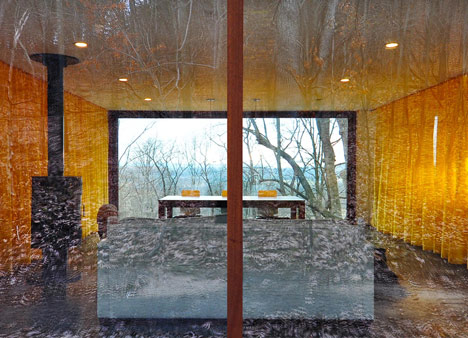
The uppermost floor contains only a study, which the architects describe as an "elevated observatory with treetop views".
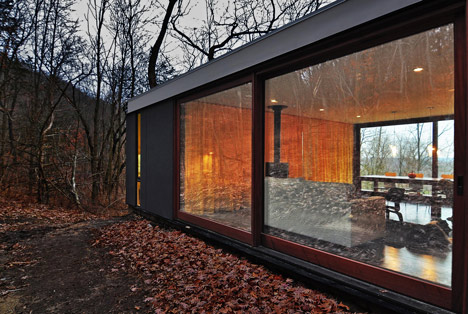
Johnsen Schmaling Architects also recently completed a rusted steel cabin for a musician, which was named a winner in the AIA Small Project Awards a few days ago. See more architecture in the US.
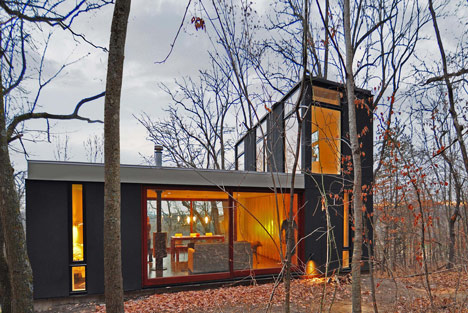
Photography is by John J. Macaulay.
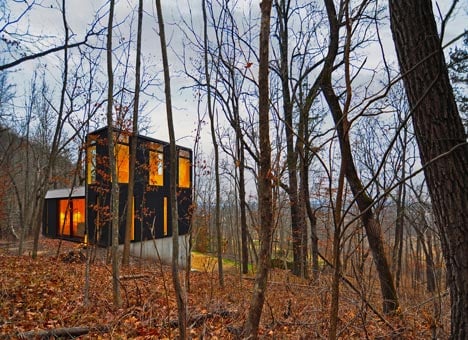
Here's a project description from Johnsen Schmaling Architects:
Stacked Cabin by Johnsen Schmaling Architects
This modest, 880 square-foot cabin for a young family sits at the end of an old logging road, its compact volume hugging the edge of a small clearing in a remote Wisconsin forest.
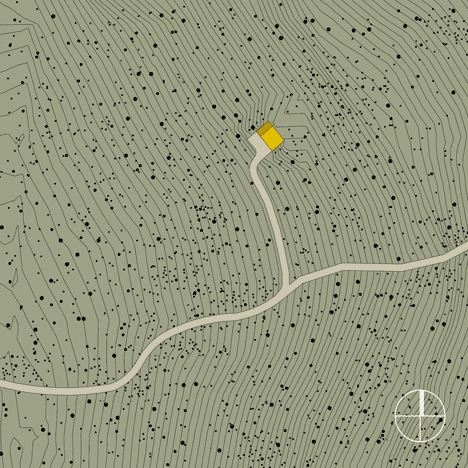
Above: site plan
The tight budget required a rigorously simple structure. In order to minimize the building's footprint and take advantage of the sloped site, the horizontally organized components of a traditional cabin compound – typically an open-plan longhouse with communal living space, an outhouse, and a freestanding toolshed – were reconfigured and stacked vertically. The bottom level, carved into the hill and accessible from the clearing, houses a small workshop, equipment storage, and a washroom, providing the infrastructural base for the living quarters above. A wood-slatted entry door opens to stairs that lead up to the open living hall centered around a wood-burning stove and bracketed by a simple galley kitchen and a pair of small, open sleeping rooms.
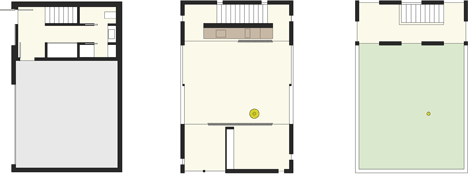
Above: floor plans - click for larger image
Floor-to-ceiling curtains on either end of the living hall can be moved or retracted, their undulating fabric and delicate texture adding a sensual dimension to the crisp interior palette. Depending on their arrangement, the curtains can provide privacy for the sleeping rooms, open them up to the main living space, or screen the kitchen when not in use. Large-scale lift-slide apertures along the sides of the living hall offer extensive views of the forest and direct access to an informal hillside terrace. In the summer, the apertures become screened openings, virtually transforming the living hall into a covered outdoor room and facilitating a high degree of cross-ventilation that eliminates the need for mechanical conditioning. A small study, originally conceived as another room adjacent to the living hall, was instead stacked on top of it, creating an intimate, elevated observatory with treetop views.
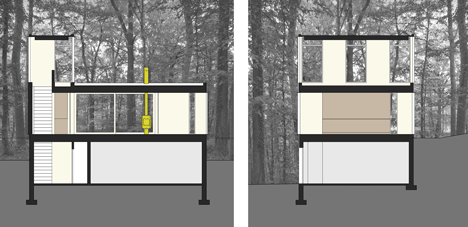
Above: sections - click for larger image
The meticulously detailed project takes advantage of readily available materials used in the region's farmstead architecture. On the outside, exposed concrete, cedar, anodized metal, and cementitious plaster all echo the muted, earthy hues of the surrounding forest and rock formations. The material palette extends to the inside, where integrally colored polished concrete floors on the two main levels provide sufficiently durable surfaces against the periodic abuse from cross country skies, dogs, and muddy hiking boots. Walls, ceilings, and built-in cabinets are painted white, lightening up the interiors during the long winter months and providing a quiet, neutral foreground against which nature's complex and ever-changing tableau, carefully framed by the cabin's large openings, can unfold.
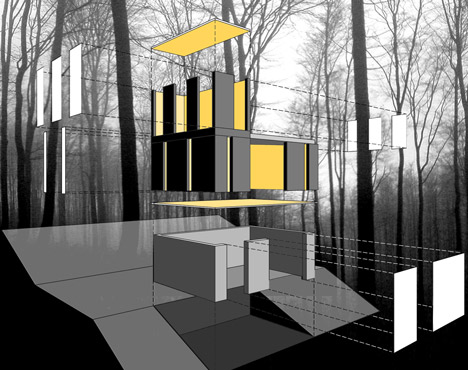
Above: exploded 3D diagram